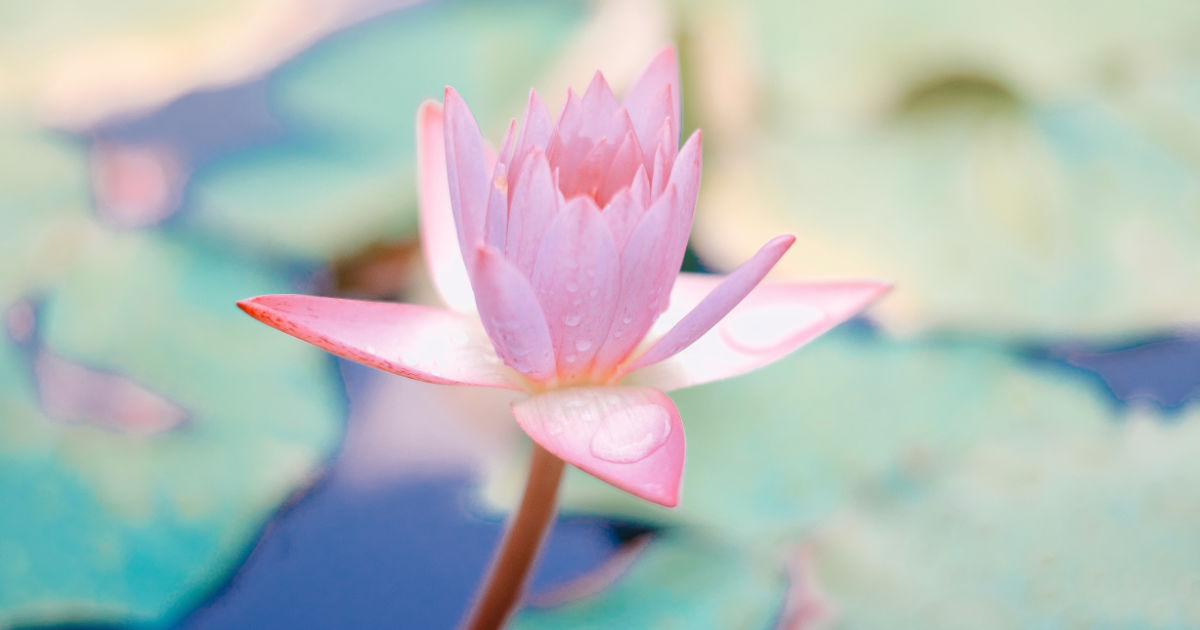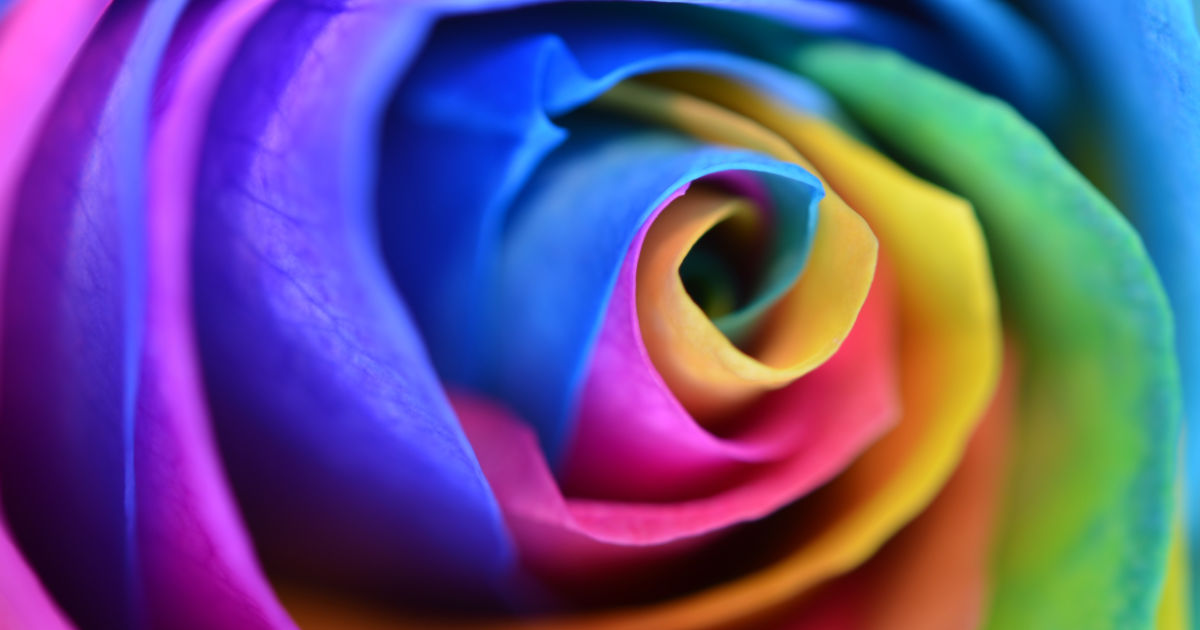My question has been answered and I will share the answer with you dear ones. In our scriptures, the Gods always pray to the Cosmic Mother, who is Maha Devi. I have always believed and venerated the Cosmic Mother as the creator. Continue reading
Tag Archives: sattva
737 – What do gunas represent in Gods
The trishul in Shiva’s right hand represents the three Gunas – Sattva, Rajas and Tamas. It is his emblem of sovereignty. He rules the universe through these three gunas. The damaru in his left hand represents the Sabda Brahmin (transcendental sound). Continue reading
714 – Be thankful
Dear ones, be thankful for what we are, what we have and what we can give. I came home after my surgery on Sunday, which was the beginning of Navratri. It is a joyous time as before that we had been observing Pitrapaksh. Seeking forgiveness for our ancestors. Before leaving the hospital, I was able to play my chants in my room. Continue reading
423 – Lotus, the favourite flower of Gods
The lotus is the most powerful symbol of spirituality, beauty, fertility and prosperity. According to Hinduism within each of us is the spirit of the lotus. It is the Anahata chakra or Hrit Padma (heart-lotus), which is the gateway to our soul. The Anahata chakra is described as blue. Continue reading
420 – Visualization
Modifications in our consciousness.
“Each day watch the colors of your mind.
Until the light shines clearly
And you see straight through
The craving of your senses.
Thus, you will win freedom from experiences
Which carves you to its form
Release from desire which eats you from within.” Swami Satyananda Saraswati.
In Hinduism, colors play a very significant role. Some of the main colors are red, yellow (turmeric), green from leaves and white from wheat flour.
The meaning of the colors
Red is the color used most frequently for auspicious occasions like marriages, birth of a child, festivals, etc. A red mark is put on the forehead during ceremonies and important situations. As a sign of marriage, women put red powder (sindhoor made from turmeric and lime juice) in their hair parting. Red powder is applied to statues of deities, during prayers. It is also the color of Shakti’s strength. A red dress is put on Gods who are charitable, merciful and protective against evil. A married Indian woman is wrapped in red, when she is cremated.
Saffron expresses fire, abstinence and celibacy. Wearing this color also means searching for the light.
Green characterizes peace and happiness.
Yellow is the color of knowledge and learning and it symbolizes happiness, peace and meditation.
White is a mixture of seven colors, and therefore depicts the qualities of each color. It typifies purity and cleanliness. It is also the color of mourning for Hindus. The deities always have a little bit of white on their clothes.
Blue is a color which is everywhere in nature. It is a color which demonstrates stability and strong character. Rama and Krishna are colored blue because they protected mankind against evil.
Violet is associated with oneness with God, peace and wisdom. The lotus flower is of many colors but violet is considered the most sacred.
Last but not least, black is a color which is used to ward of the evil eye. According to Astrology if you wish to harmonize the planetary influences, then black is the color to be worn on Saturday. Black color is offered to the fiercest form of mother. In this color she absorbs everything that she has created.
The colors of the gunas
Prakriti, the Goddess is described as having three gunas. Purity, passion and inertia. Knowledge arises from Sattwa; greed from Rajas; delusion, heedlessness and ignorance arise from Tamas. The Gunas are represented by three colors, Sattwa is harmony and purity, and is therefore white. Rajas is energy and passion and is rendered as red. Tamas is inertia and ignorance and is depicted as Black.
A special visualization for you, before you get out of bed.
Close your eyes. Breathe in and out of your nostrils eleven time. Now visualize your breath, while inhaling going in through both nostrils and meeting at the eyebrow center. While exhaling visualize the breath descending form the eyebrow center out of both the nostrils. This is triangular breathing. Do this fifty-four times. See a color in the Chidakasha, the space behind the eyebrow center. Ten minutes stay with the color, if the color changes, no worry. End the practice with becoming aware of the normal breathing process.
All the colors are very powerful in their energy. Do not push to see a particular color.
Aim Hrim Klim
324 – Vaishnava Tantra
Vishnu is worshipped in Vaishnava Tantra. He is the preserver of the world. He is said to manifest in human form in every era (Yuga), to relieve the world from suffering by evil persons, who being destroyed by him also attain their moksha. In Sattva, his Narayana form, in Rajas, his Narsimhan form, and in Tamas, his Varaha form is worshipped. Continue reading
212 – How do I train my monkey mind
We are all familiar with an agitated and distracted mind. As children we were made to stand in corners or put our fingers on our lips. We were told that our attention span is that of a gold fish’s (five seconds). As adults, we continue give in to our frantic thoughts and try to fight them. Even in a Yoga class, we will fidget. It is not unusual at all. And now we wish to practice meditation. How should we go about it? We could not sit still as kids and this habit persists. As adults we can now be compared to having a monkey mind. It is really frustrating as some of us are not aware of our ineptitude. Continue reading
155 – How we should prepare our mind
We must learn and understand the practice of Karma Yoga and Bhakti Yoga. What is Karma Yoga? The word karma is used freely and frankly and all our misfortunes are blamed on our bad Karma. Karma is the real desires created in the mind. When we wish to possess, it is karma. Karma is a movement that takes place within the mind, body or emotions. Continue reading
052 – To walk on the Sattvic path – with a balanced frame of mind
We are hedonists. Seekers of assuaging our senses. We are all engaged in the pursuit of pleasure, and this leads us to wanting more, excesses and dis-satisfaction. Every day is spent in seeking excitement and challenge. However what happens is that we develop a void in our lives, and we experience negativity in all its aspects. For many a short cut is consumption and abuse of stimulants. We want to chase the boredom away. What is the solution? How do we handle this ennui, and we have to face reality. Continue reading
Gunas, devotion and values – James Swartz – Yoga of Love, Bhakti Yoga, Bhakti Sutra, Narada
How to overcome tamas? When you are rajasic and succesful you
When you are rajasic and succesful you
have no time to pay attention to yourself. Stuck in sattva. Danger
of vanity and stop of growth. Verse 58: “Success is easier to attain
by informal devotion than by any other means.” If you bring
discipline into your life you do things that are good for you and
your self esteem grows. Verse 59: “Devotion is easiest because it
does not depend on any other authority; it is self-validating.” In
Vedanta you have to live according to the scripture. Verse 60:
“Furthermore, devotion is the embodiment of peace and supreme
joy.” Verse 61: “Once all worldly and spiritual duties are consigned
to God, the devotee need not worry about gain and loss.” Ishvara
takes care of your worldly affairs. Do the best every day and then
see what happens. Manusha the one who thinks and worry. Verse
62: “To attain non-dual devotion, do not abandon responsibilities
in this world, but surrender the results of all actions to the
Lord.”Expression of Karma Yoga. When you give the actions to the
Lord then your worry stops. Karma Yoga and gratitude. Gratitude
as a sadhana. Honesty and purity. Verses 63, 64: “Don’t chase
money or entertain yourself with sex. Don’t compromise your
values and don’t quarrel with others. Relinquish false pride,
hypocrisy and other vices.” Fearless moral inventory is necessary.
12 step program. Sorting out spiritual and material values. Fully
assimilate the good values, renounce the bad values. In the
Bhagavad Gita the values are called knowledge.
More: Vedanta Seminars.
More on: Vedanta.
Learn more about: Yoga Vidya.
You can sign up for: our online seminars.
You can also support us by: donating.
Podcast: Play in new window | Download
Subscribe: RSS
Reincarnation, non-dual love and gunas – James Swartz – Yoga of Love, Vedanta, Bhakti Sutra Narada
Free will. Making no choice and turning it over to ishvara.
Issue of free will: what values are determining your use of
free will? Those values are chosen by the gunas. If tamas
predominates fear will inform your choices. If rajas
predominates desire will inform your choices. The self has
no values. It is value-neutral. Reincarnation view: this
person will transmigrate and will be the same person in the
next incarnation. The person‘s karma is coming along with
them. But: when the body goes this person is never coming
back. The only thing that transcends time are the subtle and
the causal body. The circumstances of the next birth will be
different. You will have a new identity. The person that you
think you are is a conceptual person, no actual person. You
claim that subjective and objective events equal ‚I‘.
Transmigration: What reincarnates is the subtle body
powered by the vasanas. Your parents will be selected by
ishvara according to your vasanas. Non-eternal jiva. Eternal
jiva is consciousness. It is the same ‚I‘ for everyone and it is
eternal. Irrelevance of the personal story and the
experiences of the person when you know your nature. ISense
is an image or a reflection of the I. The reflection is
not the Self. Vedanta is a complete teaching. Since we are
multi faceted people we need to understand the self from
different angles. 360 ° knowledge of the self and the world.
Verse 51: „The essential nature of pure love of God is
beyond description.“ But you can know it. Verse 52: “Trying
to describe the experience of pure love of God is like a
mute trying to describe a particular taste.” Verse 53:
„Occasionally, pure love of God is revealed in a qualified
person.” In great souls you find this kind of love that is
totally different from worldly love. Verse 54: “Pure love of
God is devoid of material qualities and desires, manifests
more and more every moment, is uninterrupted and is
always experienced as one’s innermost consciousness.”
Verse 55 “Having discovered non-dual love, you see only
the self everywhere, hear the self in every word, speak only
of the self and think only of the self.” You can discover love
but you can‘t make it happen. You get rid of your concepts
and discover that you are love. The gunas influence the way
you experience love. Then it is love conditioned by the
gunas. Verse 56 “Secondary devotional service is of three
kinds, according to which of the gunas predominates at any
time or according to the motivation – distress, desire or
knowledge – that brings one to devotion.” Verse 57: “Each
succeeding type of devotee is superior to the preceding
type.” Rajasic devotees are superior to tamasic devotees,
sattvic devotees are superior to rajasic devotees and nondual
devotees are superior to sattvic devotees. You need
rajas to get out of tamas. Tamas means you live in a fantasy
world. In rajas you are driven by ambition. You need sattva
and knowledge to get out of rajas. Self inquiry renders the
gunas non binding, so you can overcome attachment to
sattva.
Podcast: Play in new window | Download
Subscribe: RSS










